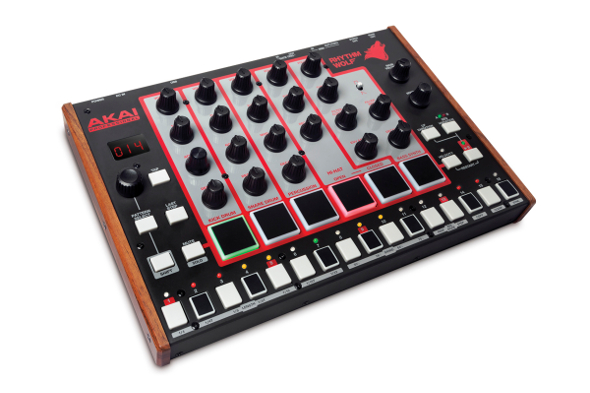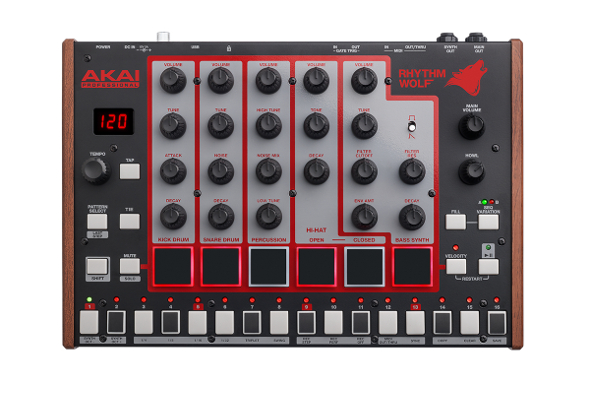Akai Professional – Rhythm Wolf

Rob Lee takes a closer look at the Rhythm Wolf to see if the Akai product meets an analogue standard.
Akai opened up a whole new world of sounds in the ‘80s by introducing the iconic S900 sampler, following up with the MPC60 sampling drum machine and work station. With a reliable brand name and background in digital mechanics now established, Akai are well regarded for their efficient MIDI controller systems. But with the current fever for affordable analogue machines heating up by the day, the Singapore-based company are getting in on the action with the Rhythm Wolf: a drum machine boasting analogue sound sources.
From the simple lay out to the classic step sequencer, all seems well with the Rhythm Wolf. It comes built with Akai’s famous performance pads should you prefer to record your patterns live, while the knobs used to control the shape of the sounds have a plastic, yet wholly tangible feel. Drum sounds include kick, snare, percussion, open and closed hi-hats, and the bass drum proffers additional control over attack and decay. However these controls only affect the volume of those parameters. The attack falls away quickly, and as you turn the knob from its middle position to the far left, there’s no real audible change, as is with the decay feature.
White noise can be blended into the boxy sound of the Rhythm Wolf’s snare, while the open and closed hi-hats are grouped together. The open hi-hat cancels out the closed hi-hat, and vice versa, meaning an open and closed sound can’t be played at the same time, however the difference between these sounds is negligible. Each channel include knobs for volume and tuning, but it seems some of them only control a certain frequency range, such as a band pass filter (snare drum) or a low pass filter (hi-hat), with the kick and percussion the only ones channels with pitch affecting controls.


The bass synth provides the choice of square and saw waves that don’t deviate too far from the good old sine wave, and they sound good. There’s limited control over the filter cut off, resonance and envelope amount, while the decay control is slightly unresponsive once you get to a certain point. You can step write the Rhythm Wolf’s bass synth element using the step switches, and the tempo knob also doubles as a pitch selection knob.
It’s possible to play the bass synth in performance mode using the step switches as a chromatic keyboard, and there’s separate outputs for the drum machine and synth. There are plenty of connection possibilities too; USB, MIDI I/O and Gate I/O for people using CV. These connections make it easy to sync this machine to your computer running programs like Ableton or Logic.
You can save 16 patterns (32 if you include the A/B sequence variations) and there are some useful performance controls such as a mute and solo mode, while there’s three layers of velocity indicated by colours green (soft), amber and red (strong) that can be programmed to the step sequencer. The three-digit display shows BPM, pattern selected or last step selected, and there is an overdrive knob on the drum machine for added grit.
The Rhythm Wolf is Akai’s answer to Korg’s Volca series of affordable analogue synths. Akai have always been about digital, and analogue is new territory for them, so although it’s not a ground breaking product, there’s loads of performance potential to be explored and it’s a great piece of kit for entry level users.
Robin Lee